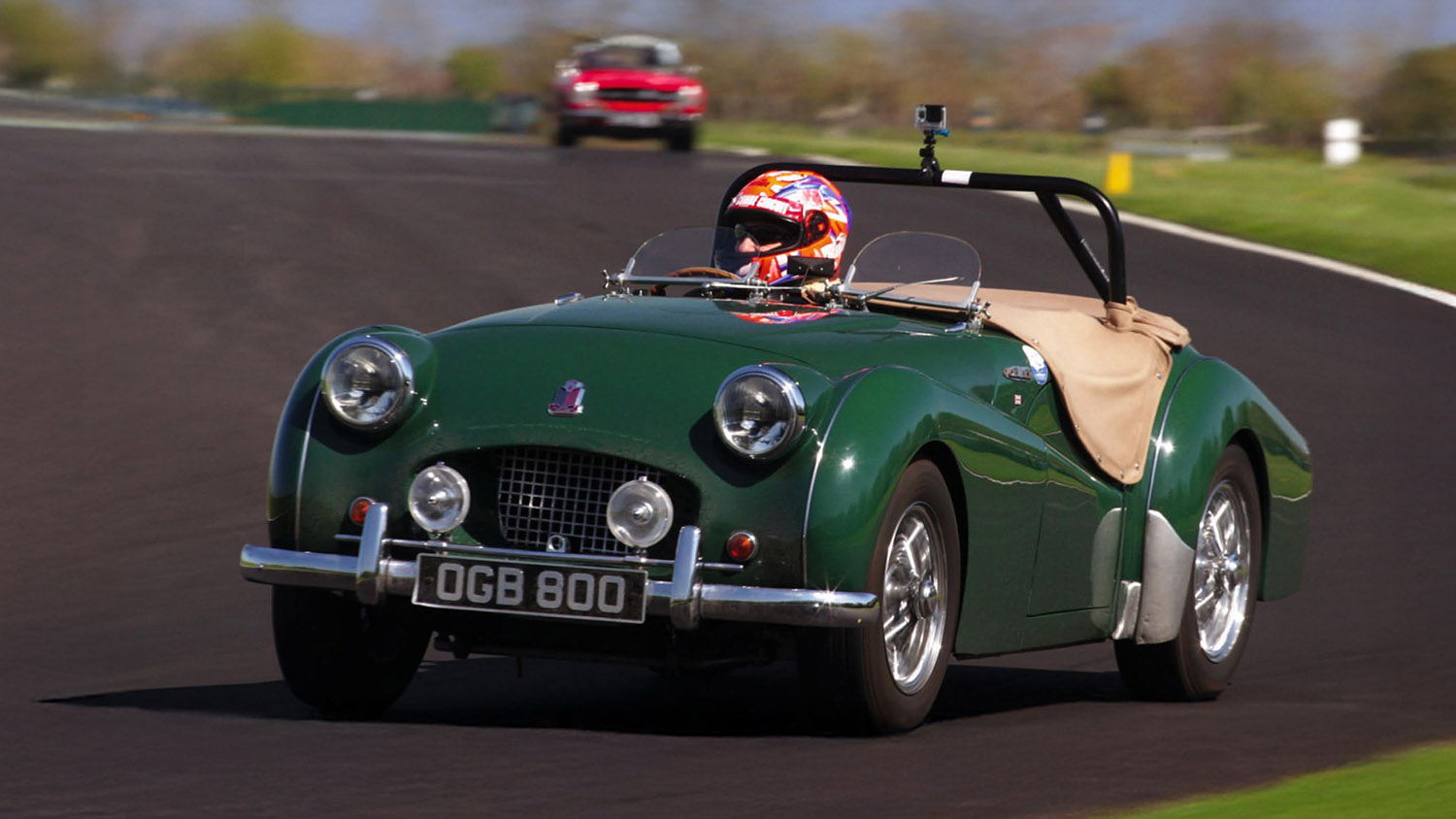BUYER’S GUIDE
Classic Triumph TR3 review
An archetypal post-war British roadster and none the worse for it, the Triumph TR3 is a distinctive and attractive classic…
Engine
2.0-litre four-cylinder petrol
Power
96PS (70kW) @ 4,800rpm
Torque
160Nm (117lb ft) @ 3,000rpm
Kerb weight
955kg
0-62mph
c. 12 seconds
What Is It?
Charming roadsters built on everyday engines and running gear were a staple of the post-war British car industry, capturing the spirit of ‘50s and ‘60s optimism and exporting it to the wider world with huge success. Based on the earlier TR2, the Triumph TR3 arrived in 1955 and represents the intersection between traditional open sportscars and the more modern style of enclosed bodywork, there being a hint of junior Jaguar XK120 in its flowing wings and cut-down doors.
True, the power from its Standard Vanguard derived 2.0-litre engine is rather less potent, but the ‘50s styling remains delightful and for trips along the lanes on a summer’s day it’s a great choice.
Corrosive Areas
Front bulkhead
Sills and A-pillars
Boot floor
Checklist
- Original TR3 developed from the TR2 and launched in 1955 with a 96PS (70kW) version of the 2.0-litre engine from the Standard Vanguard
- ‘High port’ engine introduced soon after, with power increasing to around 100PS (73kW)
- Earlier cars had drum brakes all round, updated to discs up front in 1956 – some cars may have been retrospectively upgraded, though well-adjusted drum set up is adequate for the car’s performance
- Facelifted model launched in 1957, distinguished by its full-width grille, external handles for doors and bootlid and option of a 2.2-litre engine
- TR3A description often used to distinguish this model, even if it was never an official name
- TR3B run-out edition was sold alongside the TR4, and separated into 2.0-litre TSF models and 2.2-litre TCF versions, the latter with all-synchro gearboxes
- TR2 also formed the basis for the stylish Italia 2000 Coupé, described as “Italian bodywork at its best, British tradition in sportscar engineering at its finest.” Built in Italy, it’s a handsome if not rare spin-off
- Four-speed manual transmission lacked synchro on first gear until the end of production. Whine from the gearbox is to be expected but beware jumping out of gear or grinding in higher ratios
- Simple engine is tough and long-lasting when looked after properly. Make usual checks for condition of oil, any signs of contamination in coolant, rumbling big-end bearings or smoke
- Ask the seller when the front suspension trunnions were last lubricated – any diligent owner should be doing this regularly and it will be a good indicator of whether the car has been looked after
- Traditional body-on-frame construction means a separate chassis, which can be hard to inspect without getting the car on a ramp
- Front scuttle/bulkhead a notorious rust trap if drains taking water from bonnet get blocked, and can lead to serious corrosion in sills and A-pillar
- Drains in boot floor can also block, with similarly catastrophic results
How does it drive?
In the traditions of British sportscars of the era, the TR3 combines evocative looks with relatively prosaic mechanical parts. Which is to say, set your expectations accordingly! Sucking through twin SU carbs, the 2.0-litre motor is, however, perfectly up to the job and the performance is well-matched to the looks and handling, with torquey delivery and enough pace to make a sunny blast along the lanes as evocative and fun as you’d hope. Limited rear suspension travel can make on-limit behaviour somewhat spiky but, to be fair, a TR3 is probably better enjoyed at a more leisurely pace anyway.
What’s good?
If you want your post-war British sportscar from the more trad end of the spectrum, the TR3’s ‘50s roots have an old-school charm compared with the later generation of Spitfires, MGBs and the like. The flowing, low-slung lines and cut-down doors give it a more distinctive look as well, the simple engineering underneath meaning it’s relatively easy to look after, while support in terms of parts and expertise shouldn’t be too hard to find. A less obvious choice than the Healeys, MGs and the like, the TR3 is a distinctive example of classic era of British sportscar engineering.
What’s bad?
The days of cars like the TR3 being affordable first classics are sadly long gone and you’ll need relatively deep pockets to find a good one. Which, given the relatively modest performance, may be a consideration. Weather protection is pretty minimal as well, the basic roof and sidescreens meaning it’s better left for fine days and a more involved experience if you’re touring or racking up big miles. Each to theirs, but later ‘60s roadsters are easier car to live with day-to-day. Like any car of its era, rust will be the great killer as well, and even an apparently well-presented car can conceal expensive horrors under the skin.
Which model to choose?
The main buying decision will be down to whether you prefer the original version with its smaller, central radiator recess or one of the ‘TR3A’ versions with the full-width grille. These are a lot more numerous, so if you favour the older one you may have a longer search.
Once you’ve settled that, the good news is there aren’t a whole lot of other considerations, leaving you to follow the normal advice of joining the owner community to seek advice and tip-offs for cars coming to market, buy the best you can afford and do your due diligence when it comes to checking for corrosion. 2.2-litre engines offer a bit more go but no TR3 is fast by modern standards, even if it remains a popular choice for classic rallies and the like.
Specifications – Triumph TR3
Engine
2.0-litre four-cylinder petrol
Power
96PS (70kW) @ 4,800rpm
Torque
160Nm (117lb ft) @ 3,000rpm
Transmission
Four-speed manual, rear-wheel drive
Kerb weight
955kg
0-62mph
c. 12 seconds
Top speed
c. 100mph
Production dates
1955-1962 (all variants)
